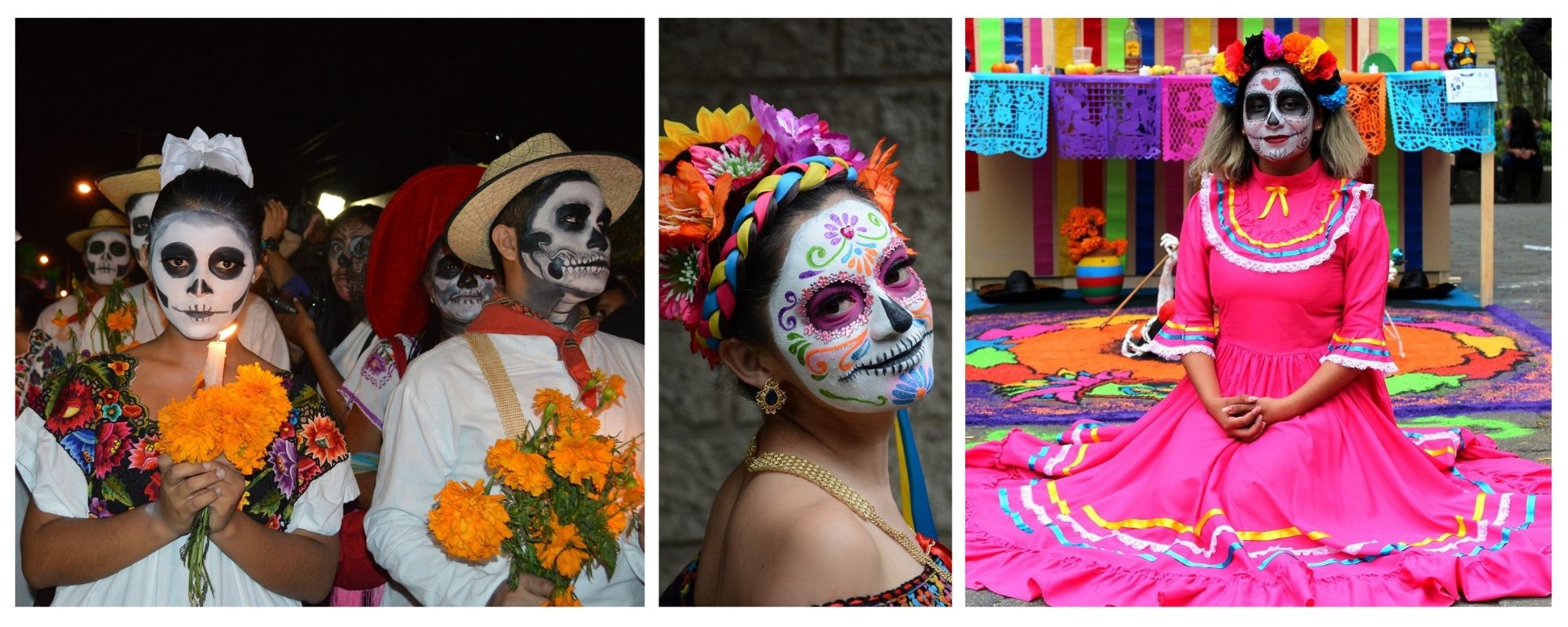By Sarah Hunt, AZFB Communications Intern

Photos: Pixabay
Today is the final day of the Day of the Dead celebration. What is it’s significance, when did it start, and why is it celebrated?
It’s earliest roots can be traced back some 3,000 years ago, to regions in Mexico and Columbia. Aztecs and Nahua people honored their dead with rituals, recognizing death as an essential part of life. When one passed away, their spirit went to Chicunamictlán, the Land of the Dead. This began a 9 stage journey completed over the course of years. Flowers, candles, food and drink were placed by surviving family members at gravesites or altars inside their homes known as ofrendas each year to assist their departed loved ones in making the journey to Mictlán, the ultimate place of rest.
After the Spaniards came to America, this ritual came to be combined with the Catholic holidays, All Saints Day and All Souls Day. The History Channel’s website features an article (see the full version here) that gives a good explanation of these days and the celebrations that go with it, stating, “[This] holiday is celebrated each year from October 31- November 2.” “Historically, Halloween, which is celebrated in many nations around the world on October 31st, began as a way for individuals to add humor and lightheartedness to the difficult theme of death,” Garza Blanca Residence Club states.
The History Channel continues by saying, “While October 31 is Halloween, November 1 is “el Día de los Inocentes,” or the day of the children, and All Saints Day. November 2 is All Souls Day or the Day of the Dead. According to tradition, the gates of heaven are opened at midnight on October 31 and the spirits of children can rejoin their families for 24 hours. The spirits of adults can do the same on November 2…
During this brief period, the souls of the dead awaken and return to the living world to feast, drink, dance and play music with their loved ones. In turn, the living family members treat the deceased as honored guests in their celebrations, and leave the deceased’s favorite foods and other offerings at gravesites or on the ofrendas built in their homes. Ofrendas can be decorated with candles, bright marigolds called cempasuchil and red cock’s combs alongside food like stacks of tortillas and fruit.
The most prominent symbols related to the Day of the Dead are calacas (skeletons) and calaveras (skulls). In the early 19th century, the printer and cartoonist José Guadalupe Posada re-envisioned Mictecacíhuatl, the Aztec goddess of the underworld, as a female skeleton known as La Calavera Catrina, now the most recognizable Day of the Dead icon.
During contemporary Day of the Dead festivities, people commonly wear skull masks and eat sugar candy molded into the shape of skulls. The pan de ánimas of All Souls Day rituals in Spain is reflected in pan de muerto, the traditional sweet baked good of Day of the Dead celebrations today. Other food and drink associated with the holiday, but consumed year-round as well, include spicy dark chocolate and the corn-based liquor called atole. You can wish someone a happy Day of the Dead by saying, “Feliz día de los Muertos.”
Looking for more ways to celebrate holidays? Find more holiday articles on Fill Your Plate’s blog!

